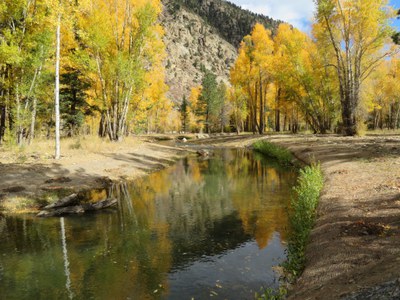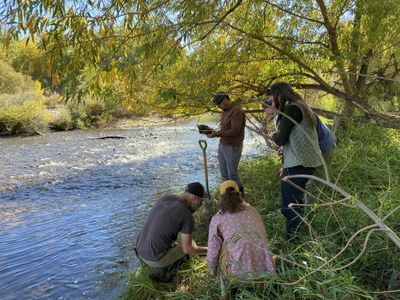Functional Assessments & Monitoring
Functional Assessment of Colorado Wetlands (FACWet)
In 2005 the CDOT Research Branch funded the initial development of the Functional Assessment of Colorado Wetlands (FACWet). Dr. Brad Johnson, formerly with Colorado State University, completed the task in 2009. Since then Brad has tested, validated, taught, and revised the method in collaboration with CDOT and others. The FACWet Version 3.2 was published in April 2014 and can be found on Brad's website.
FACWet Applicability on CDOT Projects
When a CDOT project, federally funded local agency project, or a project affecting CDOT right-of-way is proposed to permanently impact 0.1 acre or greater of wetland habitat, a FACWet analysis is required. "Wetland habitat" here refers to the U.S. Army Corps of Engineers definition based on hydrology, hydric soils, and hydrophytes and is independent of Clean Water Act jurisdiction. Additionally, the FACWet analysis should be completed during project environmental clearance work and used to determine avoidance, minimization, and compensatory requirements.
Colorado Stream Quantification Tool (CSQT)
The two U.S. Army Corps of Engineers districts in Colorado approved the statewide use of the Colorado Stream Quantification Tool (CSQT) Version 1.0. Information on the CSQT, as well as the Colorado Mitigation Procedures, can be found on the Colorado SQT webpage.
Colorado Mitigation Procedures (COMP)
The two U.S. Army Corps of Engineers districts in Colorado approved the statewide use of the Colorado Mitigation Procedures (COMP) Version 2 within the State of Colorado. The Special Public Notice states: "The COMP outlines the steps the Corps Districts in Colorado will take regarding compensatory mitigation evaluations and provides statewide predictability and consistency in the Corps’ compensatory mitigation determinations. Specifically, the COMP standardizes the Corps’ compensatory mitigation procedures for quantifying wetland and stream losses (debits) and compensatory mitigation (credits)."

